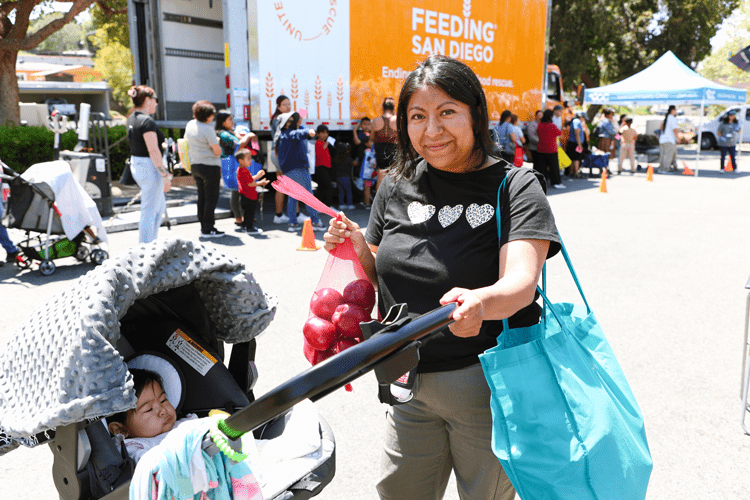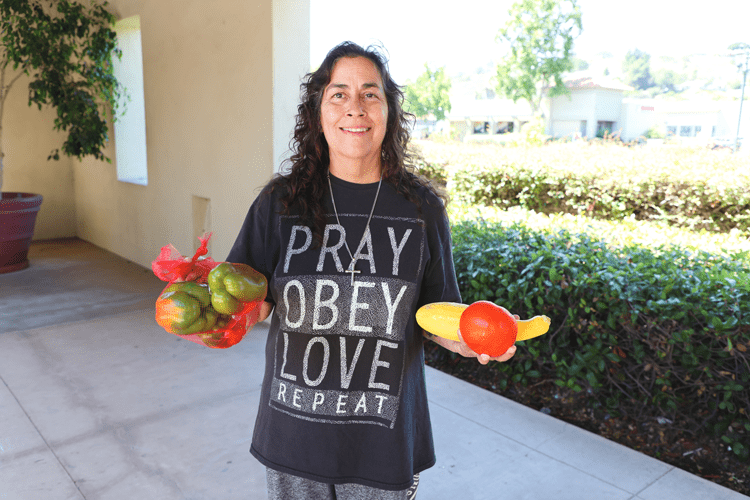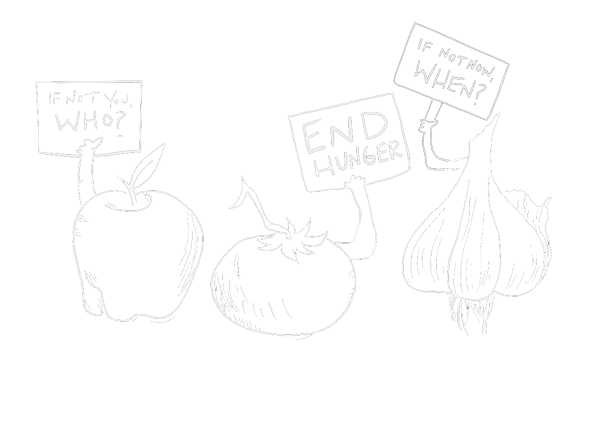Cuts to Medicaid and SNAP Will Have Major Impacts on Food Banks: How You Can Help
The budget reconciliation bill, known as the “One Big Beautiful Bill,” was signed into law on July 4, 2025. It included deep cuts to Medicaid and SNAP, which many of our neighbors in San Diego County rely on. The final version of the bill cut nearly $200 billion from the Supplemental Nutrition Assistance Program (SNAP) and more than $900 billion from Medicaid.
According to the Times of San Diego, more than 65,000 San Diegans are set to lose access to SNAP due to the July legislation. Cuts to Medicaid are estimated to affect an additional 327,000 of our neighbors. While the full ripple effect remains to be seen, Feeding San Diego is preparing for longer lines at our distributions and a growing demand for food. We urgently need the help of our community to ensure we can fill the gap left by these critical programs.
A neighbor holds the food she received at Feeding San Diego’s Vista Mobile Pantry.
Cuts to SNAP
Formerly known as food stamps, SNAP is a food assistance program that provides qualifying households with an EBT debit card to buy groceries. In California, the program is called CalFresh. Over 5.5 million Californians were enrolled in CalFresh in June 2025.
The budget reconciliation legislation dramatically changed SNAP. Some notable changes include:
- Extending the definition of able-bodied adults to anyone aged 18 to 64 who is able to work and does not have dependents under the age of 14
- Eliminating work requirement exceptions for people experiencing homelessness, individuals under age 24 who aged out of foster care at 18, and veterans
- Removing the ability for waivers to be based on a lack of sufficient jobs
- Limiting Calfresh eligibility to citizens, lawfully permanent residents (LPR), Cuban or Haitian entrants, and individuals who reside in the U.S. in accordance with a Compact of Free Association (COFA) agreement
- Removing eligibility for asylees, refugees, parolees, battered noncitizens, trafficking victims, and others
- Capping benefits and removing the option to update caps based on new dietary guidelines or the rising cost of food
In addition to these changes to eligibility and benefits, the bill also requires states to assume more SNAP administrative costs. Starting in 2027, California will have to pay nearly $2.5 billion annually to maintain current eligibility and benefits. With the current state deficit, California will struggle to cover these costs, which could result in more cuts to the CalFresh program.
A detailed breakdown of changes to SNAP is laid out in our blog post from last month.
Cuts to Medicaid
Medi-Cal is California’s Medicaid program, the state health insurance program for Californians with low income. According to the California Health Care Foundation, three in seven children, two in nine nonelderly adults, and two in five people with disabilities were enrolled in Medi-Cal in 2024. According to numbers from the California Department of Health Care Services (DHCS), Medi-Cal covers more than one-third of the state’s population.
The cuts approved in July 2025 will effectively end health care coverage for about eight million people nationwide. This loss of coverage will further tighten budgets for many families in our community. They may have to make impossible choices between nutritious food and healthcare.
Food insecurity and high healthcare costs can create a vicious cycle for our neighbors. Adults who are food insecure are often at a higher risk for negative health outcomes and chronic diseases. Food insecurity is also linked to developmental issues and low mental health in children. These health issues can lead to higher healthcare costs and reduce food budgets.
Understanding the Impact of Cuts
CNBC reported that the cuts to SNAP may cause 22.3 million families to lose some or all of their benefits. Per their investigation, the average family may lose about $146 per month.
Cuts to SNAP have already affected members of our community. We met Kristine at one of the Feeding San Diego summer food distributions at Poway Library. She shared how reduced benefits have already impacted her day-to-day life.
Kristine holds food she received at the Poway Library summer food distribution.
“I did have food stamps, and they used to last like a month, and now they’re lasting like two weeks. It’s been impacting my wallet in every aspect. When I get paid from Social Security, because I’m super low income, there’s maybe $50 in my bank for the rest of the month, so it’s pretty hard to live on. I stay home a lot. There’s just no money for anything. I have to watch everything that I do, everything that I eat, and spend. Car insurance, car payments, everything is just higher. So, it’s forcing me to stay inside and get food on food days. Thank goodness there’s programs like this. I just can’t be more grateful. I don’t know what I would do without them.”
Increased Strain on Charitable Food Organizations
Food insecurity is on the rise in the United States – and in San Diego County. According to Feeding America’s Map the Meal Gap numbers, food insecurity in San Diego County rose 10% between 2022 and 2023. Nearly 400,000 people in San Diego County are food insecure, including over 100,000 children. These cuts to Medicaid and SNAP will only worsen the issue our community already faces.
For every one meal the Feeding America Network provides, SNAP provides nine. Charitable food organizations, like Feeding San Diego, do not currently have the capacity to fill that gap. We need to prepare now for longer lines and higher demand.
How You Can Help
90% of Feeding San Diego’s funding comes from private donors. In the past, that has helped our organization weather cuts to federal food assistance programs. However, these latest cuts are expected to have a much larger impact.
There are many ways you can help support your neighbors facing food insecurity.
- Donate: Every dollar you donate to Feeding San Diego helps provide two meals to the community. In August, a generous supporter will match donations up to $50,000 to double your impact!
- Give monthly: Becoming a monthly donor is one of the most impactful ways to support Feeding San Diego. Monthly donations help us plan and adapt to emergency situations. Through the end of August, our friends at Chosen Foods are matching the first three donations of new monthly donors, up to $14,200! Learn more about Feed 365, our community of monthly donors.
- Start a food or fund drive: You can mobilize your network to help raise money for Feeding San Diego. Fundraisers are a great way to support our mission. You can also start a virtual food drive or collect food from friends and neighbors.
Any action you take, whether donating funds, food, or time, makes a difference. Our community is facing a difficult time. We need your help now more than ever. Get involved today to help end hunger in San Diego County.

